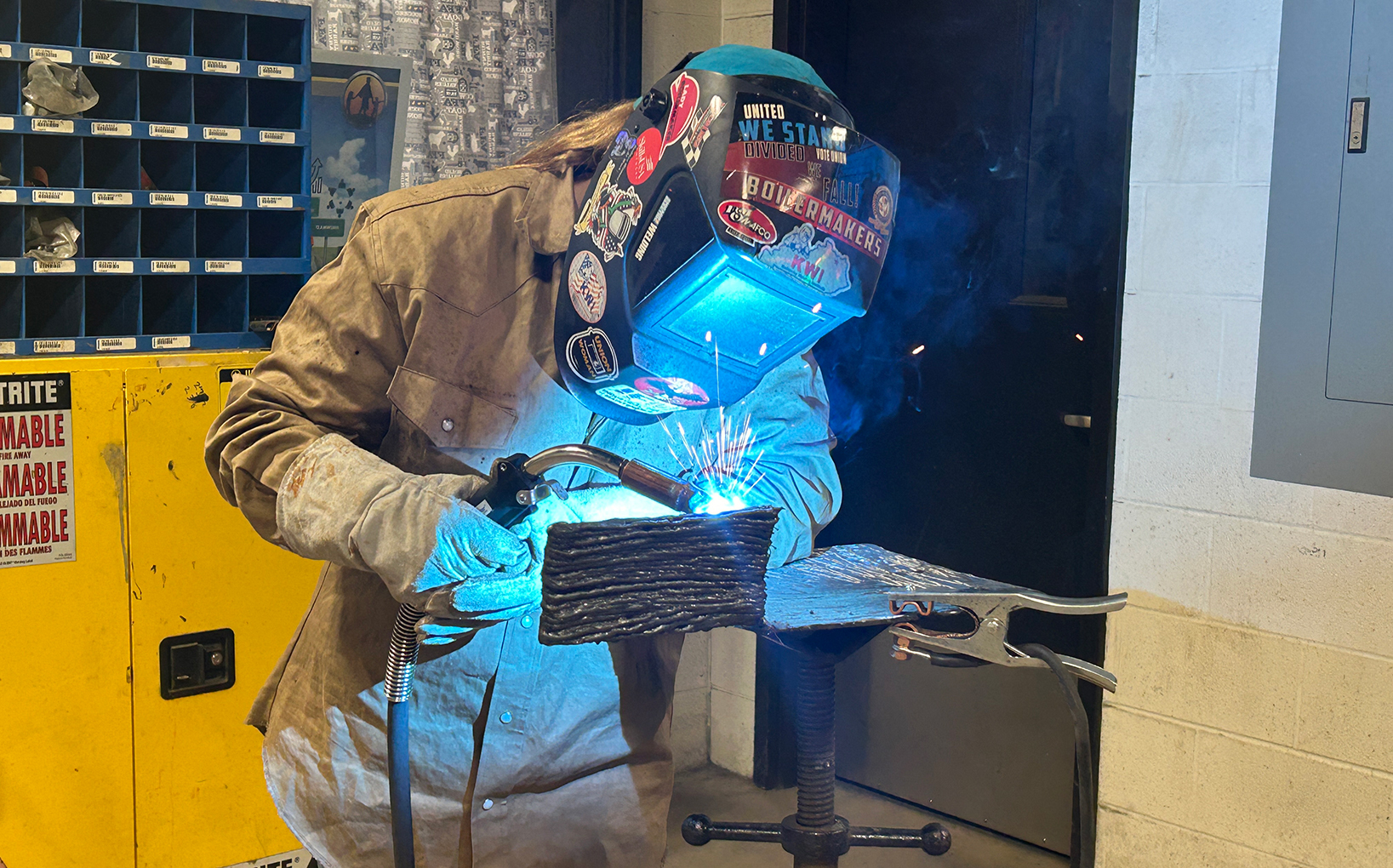By Mike Marsee
michael.marsee@education.ky.gov

Stephanie Harmon works with seniors Calan Cromer and Jacob Witten as they research volcanoes during earth science class at Rockcastle County High School. Student engagement is a key component in Harmon’s classes, and she frequently shares her classroom experiences with other teachers in her role as a consultant.
Stephanie Harmon isn’t just going to stand there.
The Rockcastle County High School teacher wants her students to participate rather than simply listen during her science classes. She also works to share her strategies with other teachers.
Harmon tells her fellow educators that student engagement is essential. She can offer evidence of its success that she has seen in her own classroom.
“They (students) have an increased understanding,” Harmon said. “That changes my role so that instead of me just kind of standing there and being this grand deliverer of knowledge, I really become more of a facilitator of their learning experience.”
Harmon is facilitating the learning experience for her fellow educators as well. A teacher for 20 years, she has done consulting work for about five years.
“I really enjoy working with other teachers because I walk away learning as much as I hope they have learned,” she said. “It’s helpful for me because it helps me reflect on my own practice. I have learned so much from getting to interact with those teachers.”
Harmon was named the Kentucky Science Teacher Association’s Outstanding High School Science Teacher in 2014.She also was part of the Kentucky team that worked with teams from 26 other states to develop the Next Generation Science Standards in 2013.
As one of 11 regional teaching partners in the University of Kentucky’s Partnership Institute for Math & Science Education Reform (PIMSER), Harmon addresses teachers both in PIMSER’s Lexington headquarters—where she led five sessions this summer—and in their schools. When she does these sessions, she makes a point of not only explaining, but also demonstrating, her methods.
“As we learn the strategies, we’re using the strategies,” she said. “It’s not just stand and deliver.”
In Harmon’s classes at Rockcastle County, students are paired with “talk partners” with whom they discuss their work. It’s one of the strategies she discusses in her training sessions with teachers.
“That empowers them, it helps them have ownership of their learning,” she said. “Knowing they’re accountable to have to talk about it, they’re more thoughtful of what they’re going to say.”
She said it would be easy for friends to pair up as talk partners and get sidetracked with discussions that aren’t about the lesson at hand, but she doesn’t let that happen.
“Students are accustomed to having a talk partner and those partners frequently change, so they can build a relationship with that person that is focused on work,” Harmon said. “It’s so important in preparing our students for life after high school, how to have a conversation about the work, whatever the work might be.”
Harmon said she has seen her students develop a better understanding of the content and develop stronger communication skills.
“I have seen students come out of their shell who might not speak up on their own,” she said. “Through the use of talk partners, they have no choice.”
That speaks to her desire to prepare all of her students–the vast majority of whom won’t pursue science beyond the high school or college classroom–for success.
“Obviously, I want them to know and understand the science content,” Harmon said. “But more important to me, I want them to walk away from high school prepared to be successful in whatever career path they choose.”
Harmon’s work is based on the research of Pérsida Himmele and William Himmele, who have written on the importance of active participation and cognitive engagement. She said student engagement also is a focal point of significant portions of the Professional Growth and Effectiveness System.
“What I try to do is help teachers think of lessons where you know the content is important, but you feel like the lesson isn’t as good as it should be,” Harmon said. “Then let’s look at those engagement techniques, looking at incorporating content. Even if it’s a piece of reading, there are engagement techniques that can be used. The more you interact with that content, the better you can retain it.”
Harmon said she knows it might not be easy for teachers to get their students engaged at the level her students do, but the payoff is worth the effort.
“It has really made me reflect on my classes. You really have to think about what you’re doing,” she said. “In the beginning, that was very hard for me. I felt like doing these things would cause me to lose control of my classroom, but really it makes that classroom experience so much richer because everybody’s involved. It has been very powerful to me to see what a difference that can make in how those students learn.”
MORE INFO …
Stephanie Harmon stephanie.harmon@rockcastle.kyschools.us



Leave A Comment